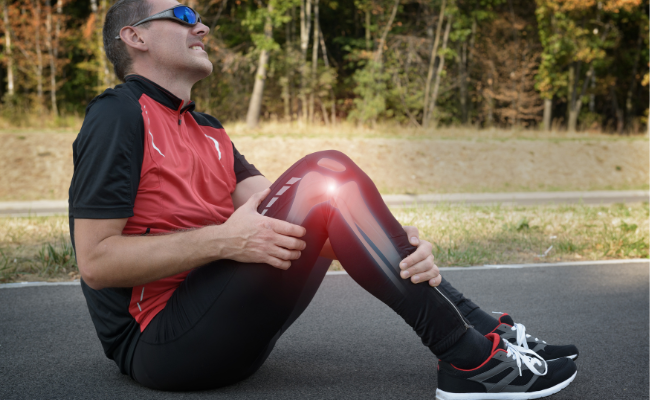How to Treat Knee Pain?
- November 09, 2023
- No Comments

What is Knee Pain?
Knee pain is a widespread problem affecting people of all ages, arising from various factors such as injuries, overuse, or underlying medical conditions. The pain can vary from mild discomfort to severe, hindering daily activities and overall quality of life. This discomfort centers around the knee joint, where the thigh bone (femur) meets the shin bone (tibia), the largest joint in the body responsible for bearing substantial weight and enabling diverse movements. Given its pivotal role, the knee is prone to injuries, making knee pain prevalent.
Initially, knee pain might be a temporary issue caused by minor injuries or strain. However, it can transform into a chronic problem, necessitating proper medical attention. Chronic knee pain significantly affects daily activities, mobility, and overall well-being, highlighting the importance of accurate diagnosis and suitable treatment from healthcare professionals. Timely medical advice is essential to effectively manage knee pain and prevent its persistence as a long-term concern.
Why Does Knee Pain Occur?
Knee pain can occur due to several reasons, including:
- Injuries: Injuries to the ligaments, tendons, or meniscus within the knee joint can cause pain. This includes strains, sprains, and tears.
- Arthritis: Osteoarthritis, rheumatoid arthritis, and other types of arthritis can damage the knee joint, leading to pain, swelling, and stiffness.
- Overuse: Repetitive movements or excessive strain on the knee joint, common in athletes, can result in pain and inflammation.
- Mechanical Problems: Problems with the alignment of the kneecap (patella) or issues with the foot and hip can cause imbalances, leading to knee pain.
How to Treat Knee Pain?
- Rest and Ice: Resting the affected knee and applying ice can help reduce inflammation and relieve pain. Ice should be applied for 15-20 minutes every 2-3 hours during the initial 48 hours after the injury.
- Compression and Elevation: Wrapping the knee with a compression bandage can provide support and reduce swelling. Elevating the leg can further minimize swelling.
- Pain Medications: Over-the-counter pain relievers like ibuprofen or acetaminophen can help manage pain and reduce inflammation. However, it's essential to consult a healthcare professional for proper dosage and duration.
- Physical Therapy: Physical therapy exercises can strengthen the muscles around the knee, improve flexibility, and enhance joint stability. Therapists may use techniques like ultrasound and electrical stimulation for pain relief.
- Braces and Supports: Knee braces or supports can provide stability and alleviate pressure on the affected area, reducing pain and promoting healing.
Treatment Solutions for Knee Pain
- Injections: Corticosteroid injections can help reduce inflammation and relieve pain in the knee joint, providing temporary relief for those with arthritis or other inflammatory conditions.
- Hyaluronic Acid Injections: Also known as viscosupplementation, these injections help lubricate the knee joint and alleviate pain, particularly in individuals with osteoarthritis.
- Platelet-Rich Plasma (PRP) Therapy: PRP therapy involves injecting a concentration of the patient's own platelets into the knee to stimulate healing and reduce pain and inflammation.
- Surgical Interventions: In severe cases, surgical procedures like arthroscopy, meniscus repair, or knee replacement may be necessary to address underlying issues causing chronic pain.
Benefits of Treating Knee Pain
- Improved Mobility: Effective treatment can restore mobility and flexibility, allowing individuals to resume normal activities without discomfort.
- Pain Relief: Proper interventions alleviate pain, enhancing the overall quality of life and enabling individuals to engage in daily tasks pain-free.
- Prevention of Further Damage: Timely and appropriate treatment can prevent the progression of the condition, minimizing the risk of further damage to the knee joint.
- Enhanced Quality of Life: Reduced pain and improved mobility contribute to an enhanced quality of life, promoting physical and mental well-being.
- Prevention of Complications: Addressing the root cause of knee pain prevents complications, ensuring long-term joint health and preventing related issues like muscle imbalances and gait problems.
Comments (0)